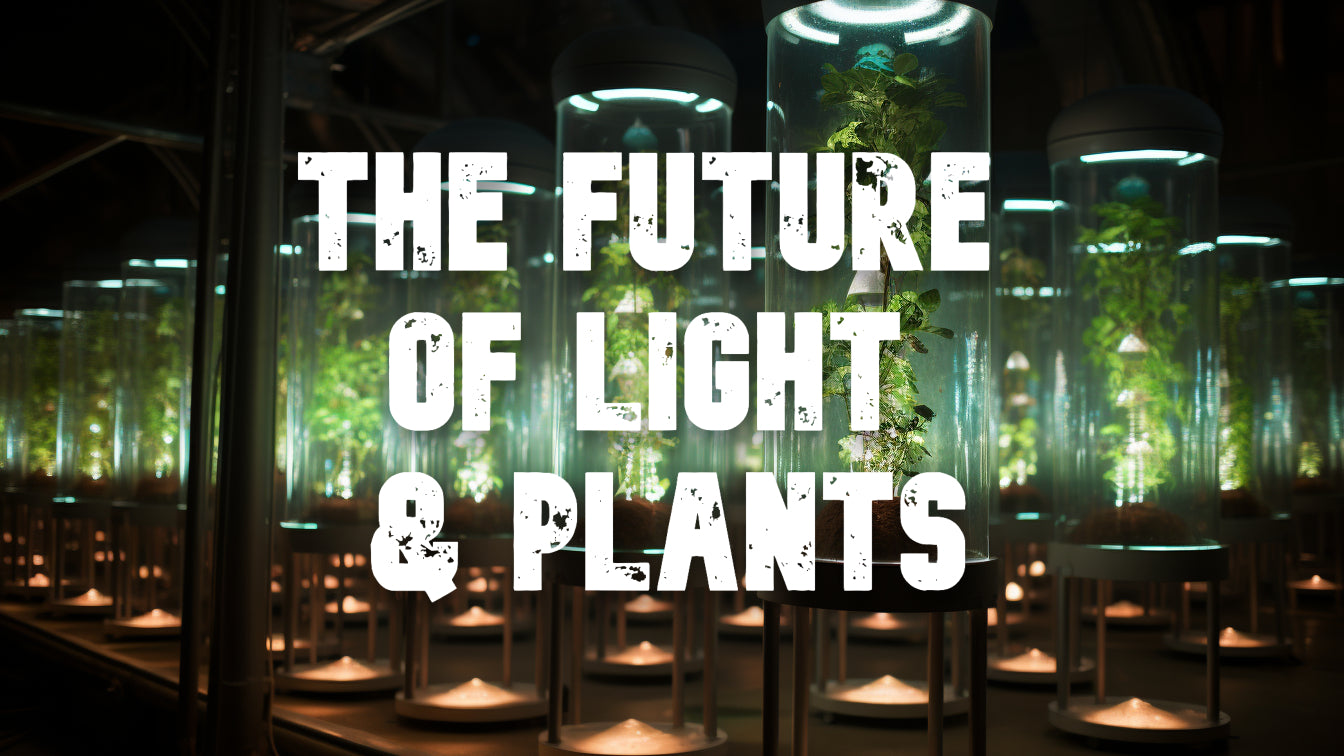Veteran-Owned. Free Shipping in the USA on nearly all items!
Call us: 888-611-9305
Veteran-Owned. Free Shipping in the USA on nearly ALL items!


As cannabis cultivation continues to evolve, the intersection of science and technology plays a pivotal role in shaping the future of the industry. Here, we will explore the exciting developments and innovations on the horizon that aim to revolutionize the way we use light for optimal cannabis growth.
One of the key areas of innovation lies in the realm of advanced spectral tuning. Researchers and cultivators are actively exploring ways to manipulate the light spectrum more precisely, tailoring it to the specific needs of different cannabis strains. This level of customization holds the promise of maximizing cannabinoid production and overall plant health.
Recent advancements in LED technology, in particular, have allowed for finer control over individual wavelengths. Cannabis growers can look forward to programmable lighting systems that can dynamically adjust the spectrum throughout the plant's life cycle. This adaptive approach ensures that the plant receives the most beneficial light at each growth stage.
The integration of optogenetics into cannabis cultivation represents a cutting-edge approach. Optogenetics involves using light to control and manipulate the behavior of genetically modified organisms. In the context of cannabis, this means engineering plants to respond to specific wavelengths of light in predetermined ways.
Researchers are exploring the potential of designing cannabis strains with optogenetic modifications that enhance cannabinoid production, improve resistance to pests and diseases, and optimize overall growth. While this technology is still in its infancy, the prospect of customizing plants at a genetic level through light signals opens up new frontiers in cannabis cultivation.
Advancements in genetic editing techniques, such as CRISPR-Cas9, are poised to revolutionize cannabis cultivation. Scientists are working on identifying and modifying genes responsible for light perception and response in cannabis plants. This targeted genetic editing could lead to the development of strains that are inherently more responsive to specific wavelengths of light, thereby boosting their growth and cannabinoid production.
The potential benefits of light-responsive genetic editing extend beyond cannabinoid profiles. Cultivators may be able to create plants that are more resilient to environmental stressors, have improved nutrient uptake, and exhibit enhanced terpene production. This intersection of genetic editing and light responsiveness holds immense promise for the future of cannabis agriculture.
As the cannabis industry embraces smart agriculture, the integration of artificial intelligence (AI) into light management systems is becoming a reality. AI algorithms can analyze vast amounts of data related to plant growth, environmental conditions, and light spectra to optimize cultivation parameters in real-time.
In practical terms, AI-powered lighting systems can dynamically adjust the light spectrum based on the unique requirements of individual plants or entire crops. Machine learning algorithms can learn and adapt to the specific needs of different cannabis strains, creating a feedback loop that continually refines the lighting conditions for maximum efficiency.
Quantum dots, nanoscale semiconductor particles, are emerging as a potential game-changer in enhancing light absorption efficiency in plants. These tiny structures can be tuned to emit specific wavelengths when exposed to light, and researchers are exploring their application in agriculture.
In cannabis cultivation, quantum dots could be used to enhance light absorption in chloroplasts, the cellular organelles responsible for photosynthesis. By strategically incorporating quantum dots into lighting systems, cultivators may be able to improve the overall energy conversion efficiency of light, potentially leading to increased biomass and cannabinoid production.
As our understanding of the intricate relationship between light spectra and plant physiology deepens, the concept of "light recipes" is gaining traction. This involves creating specific combinations of wavelengths to achieve targeted effects in cannabis plants. For example, a tailored light recipe could be designed to maximize THC production in one strain while promoting CBD in another.
Cultivators can anticipate the availability of pre-programmed light recipes that align with the characteristics of different cannabis strains. These recipes could be shared and refined within the community, creating a collaborative approach to optimizing light conditions for various desired outcomes.
The Internet of Things (IoT) is making its mark on cannabis cultivation by enabling real-time monitoring and control of environmental factors, including light. Smart sensors and connected devices can provide cultivators with instant feedback on light intensity, spectrum, and duration.
By integrating IoT technologies into lighting systems, cultivators gain the ability to remotely monitor and adjust light conditions. This not only streamlines the cultivation process but also allows for more precise and responsive management of the growing environment. The result is greater efficiency, reduced resource consumption, and improved overall crop quality.
As the cannabis industry matures, the emphasis on sustainability becomes increasingly important. Innovations in lighting are not only focused on improving growth but also on minimizing environmental impact. Future developments include the integration of energy-efficient technologies, such as solar-powered LED systems and novel materials that enhance light distribution while reducing energy consumption.
Sustainable lighting solutions align with the broader trend of eco-conscious cannabis cultivation. By adopting environmentally friendly lighting practices, cultivators can reduce their carbon footprint and contribute to a more sustainable and responsible industry.
The future of cannabis cultivation holds exciting possibilities in the realm of light management. From advanced spectral tuning and optogenetics to AI-powered systems and sustainable solutions, the convergence of science and technology is set to redefine how we cultivate and harness the potential of cannabis plants. As these innovations continue to unfold, cultivators can look forward to a new era of precision, efficiency, and sustainability in cannabis cultivation.
{"one"=>"Select 2 or 3 items to compare", "other"=>"{{ count }} of 3 items selected"}